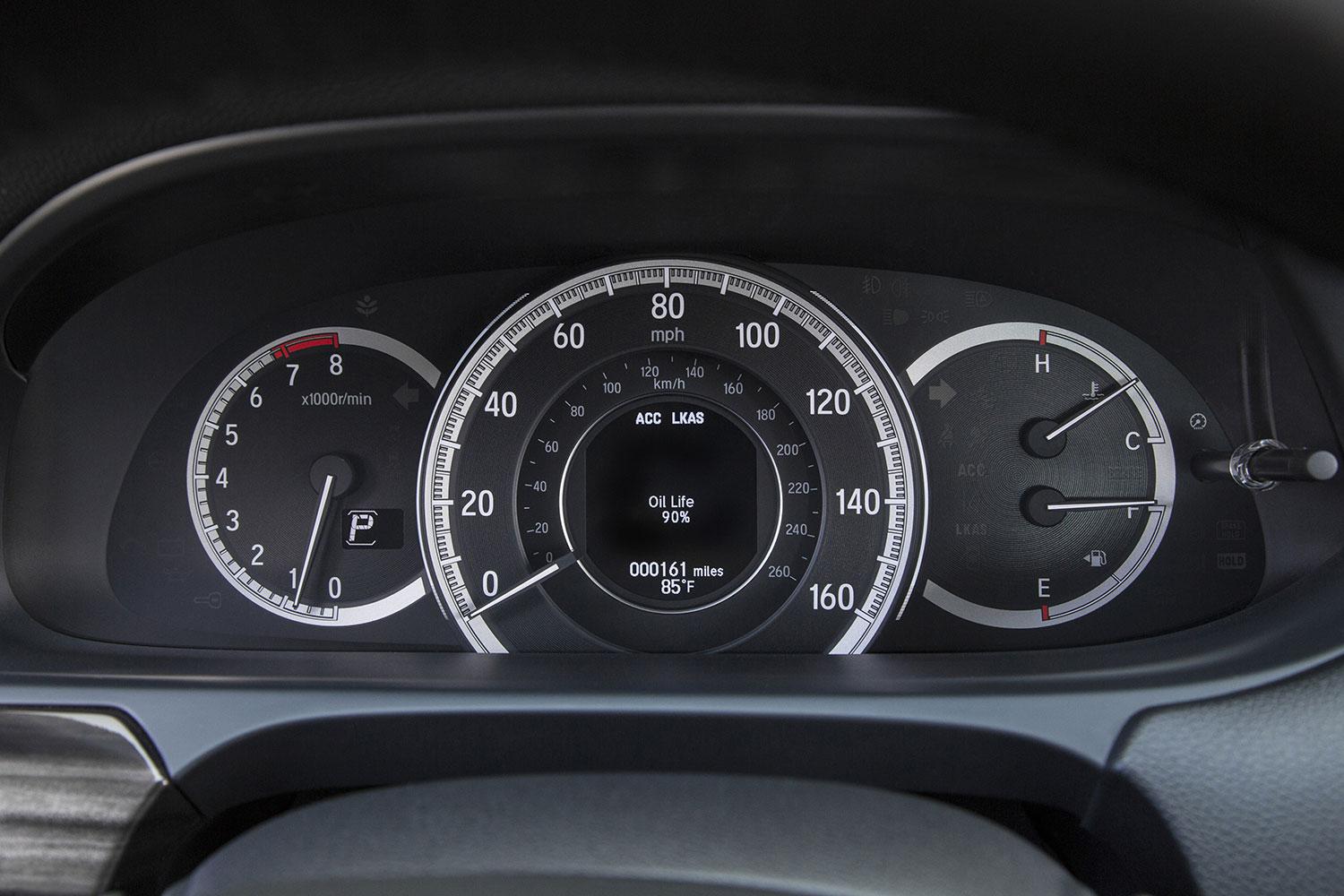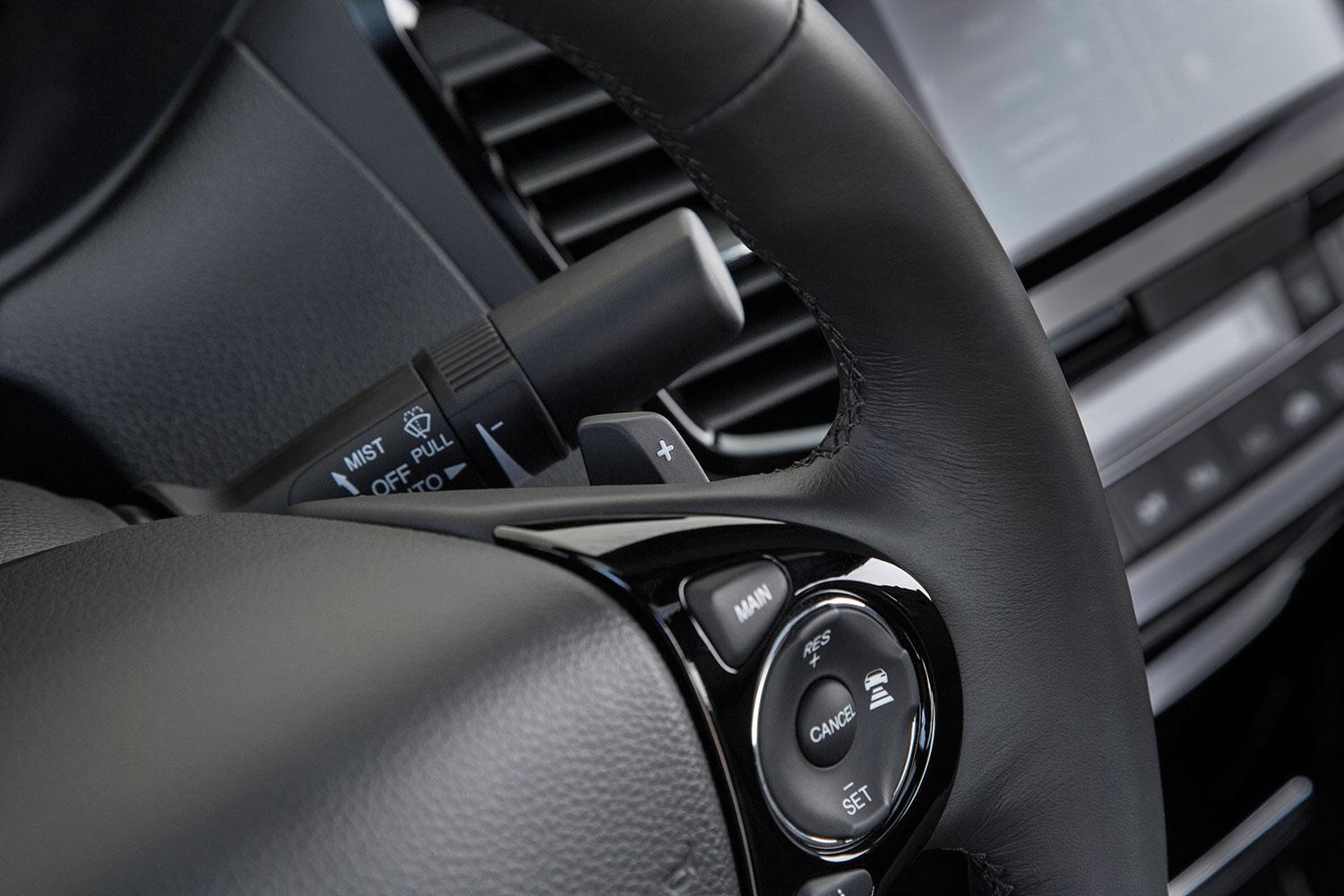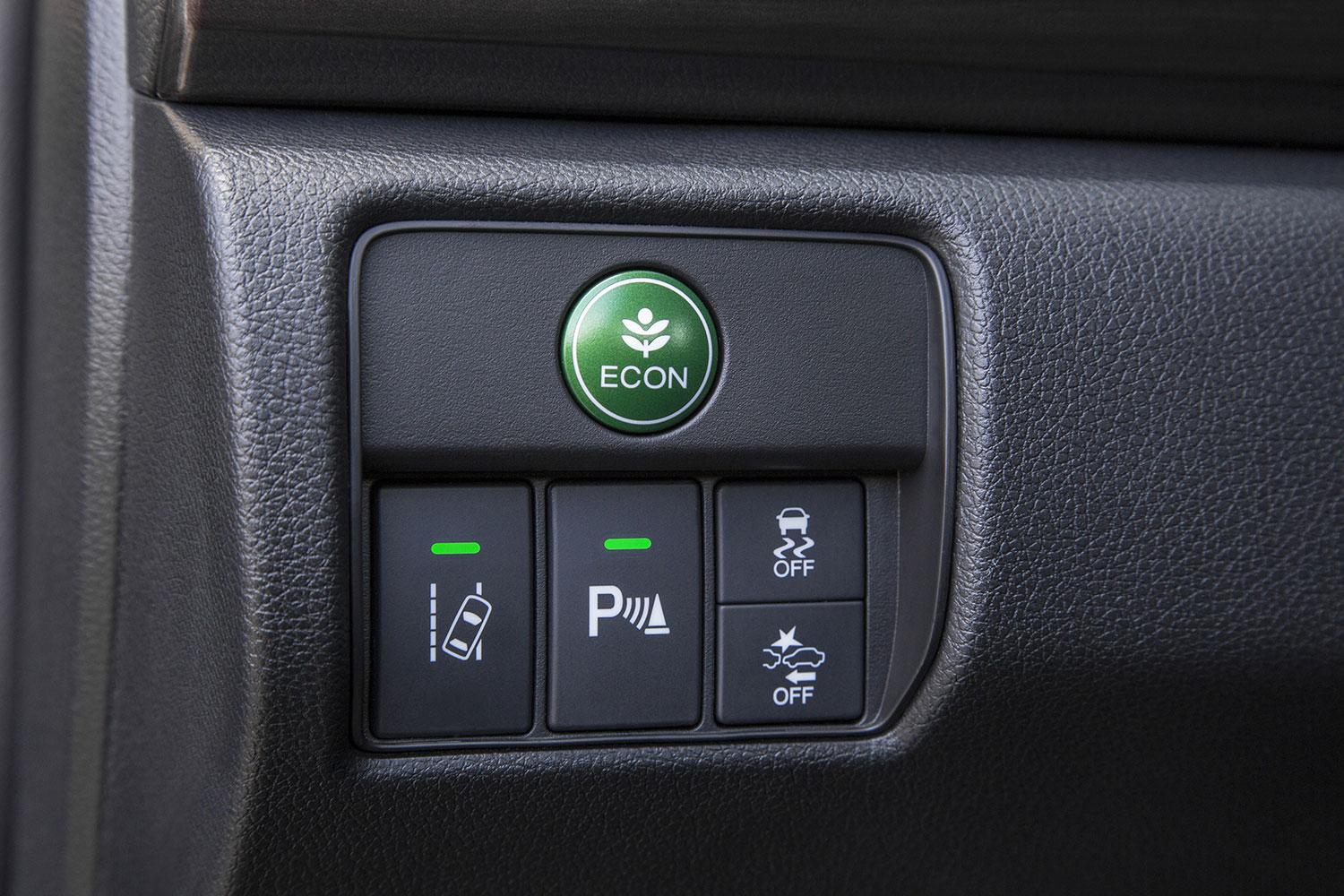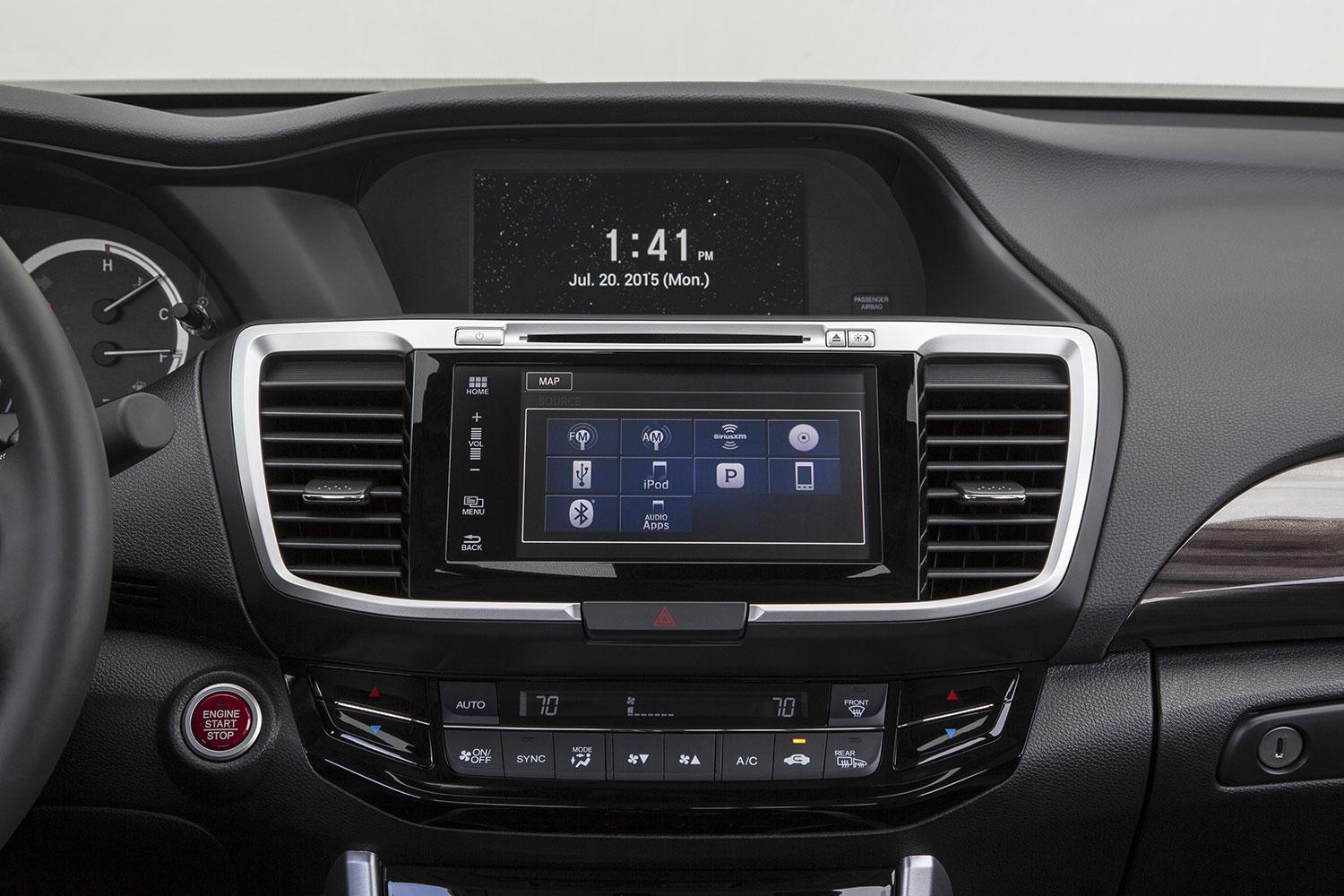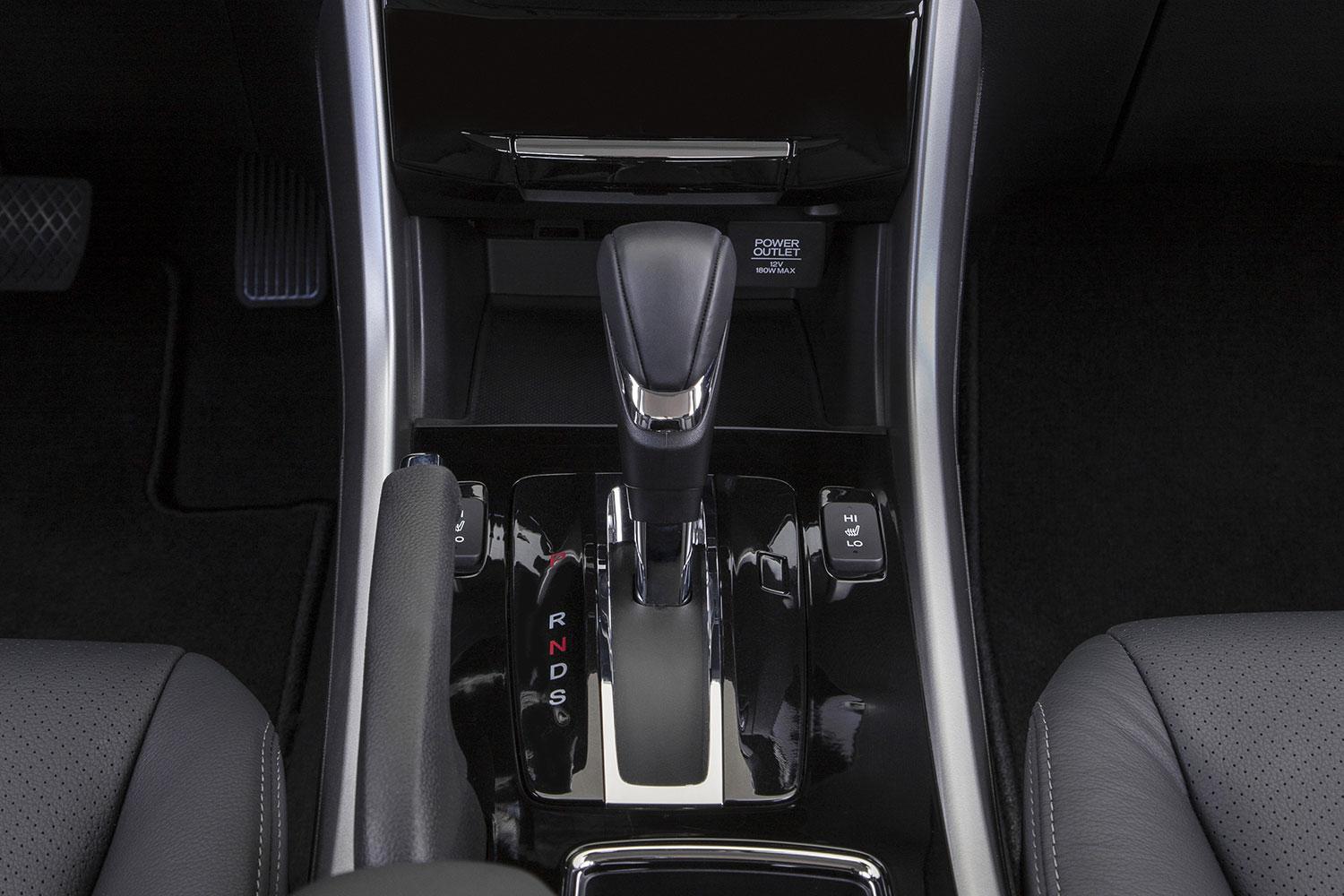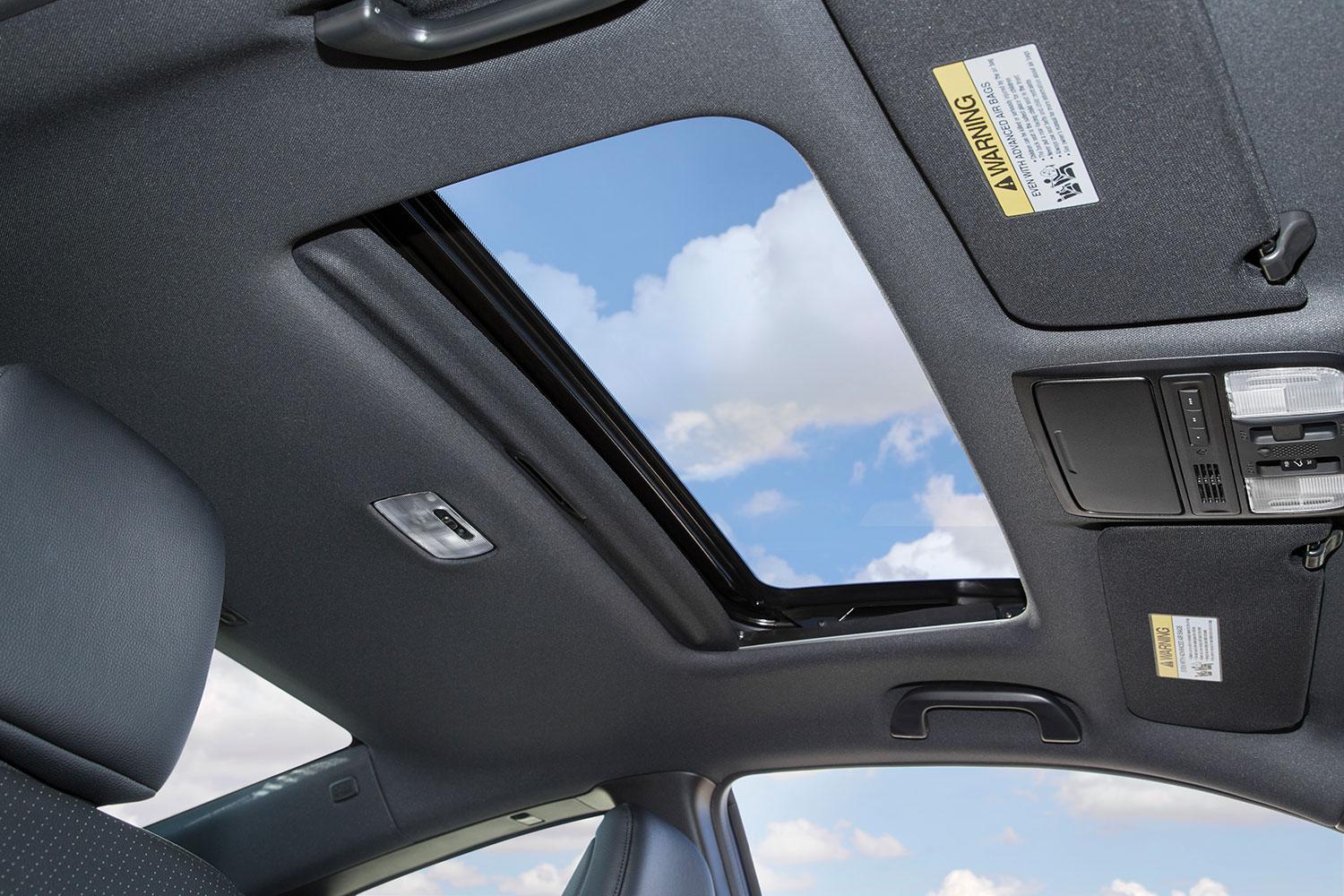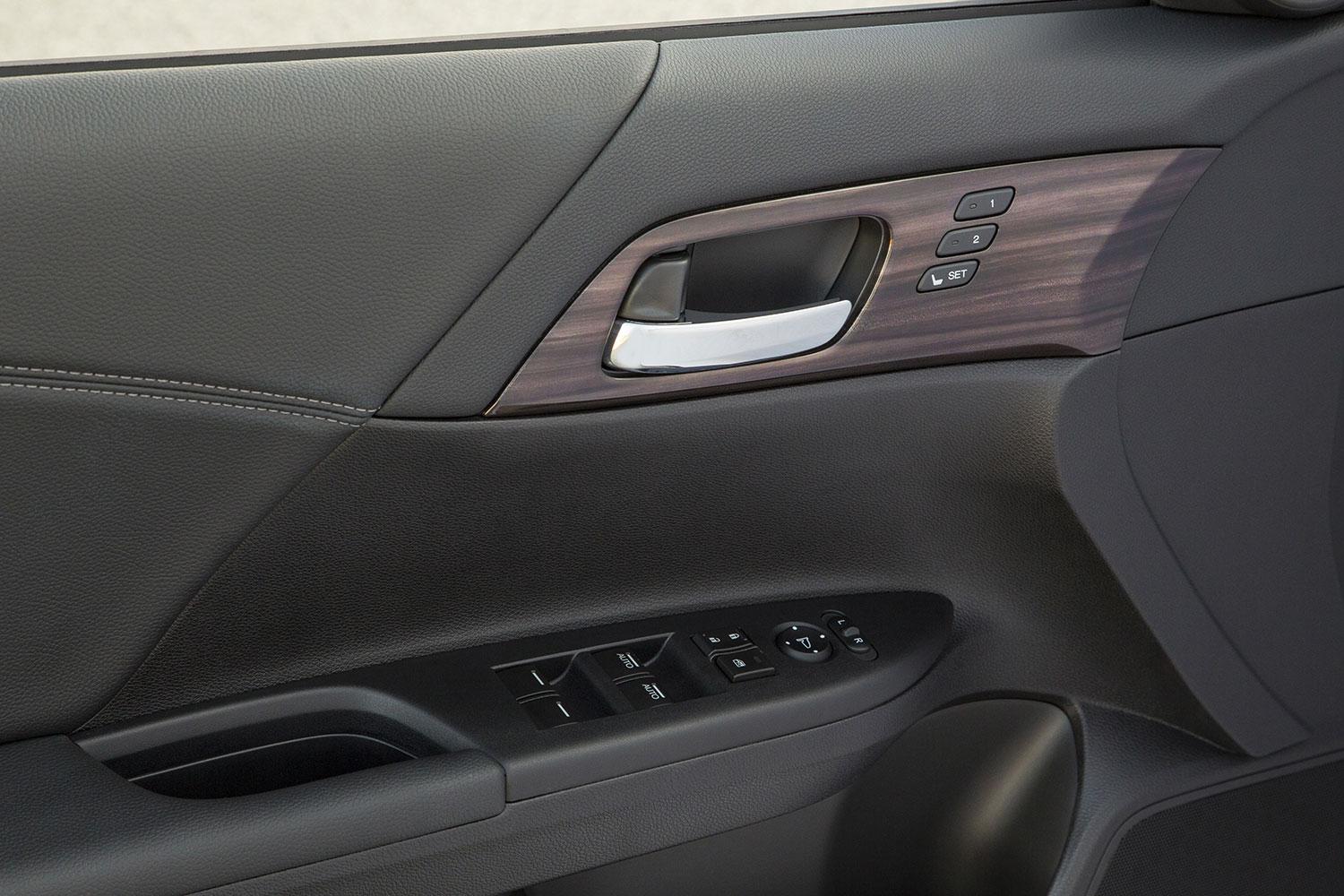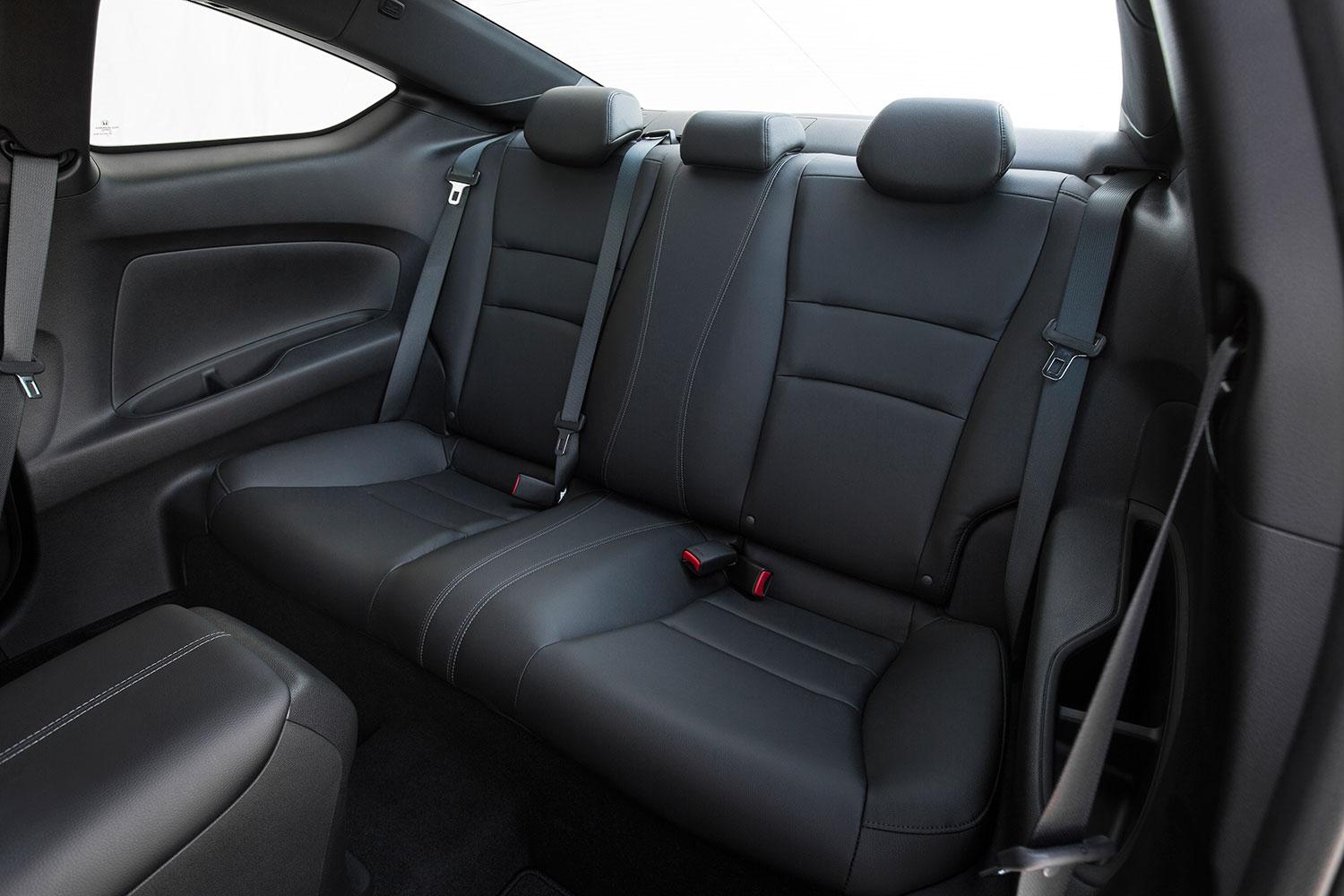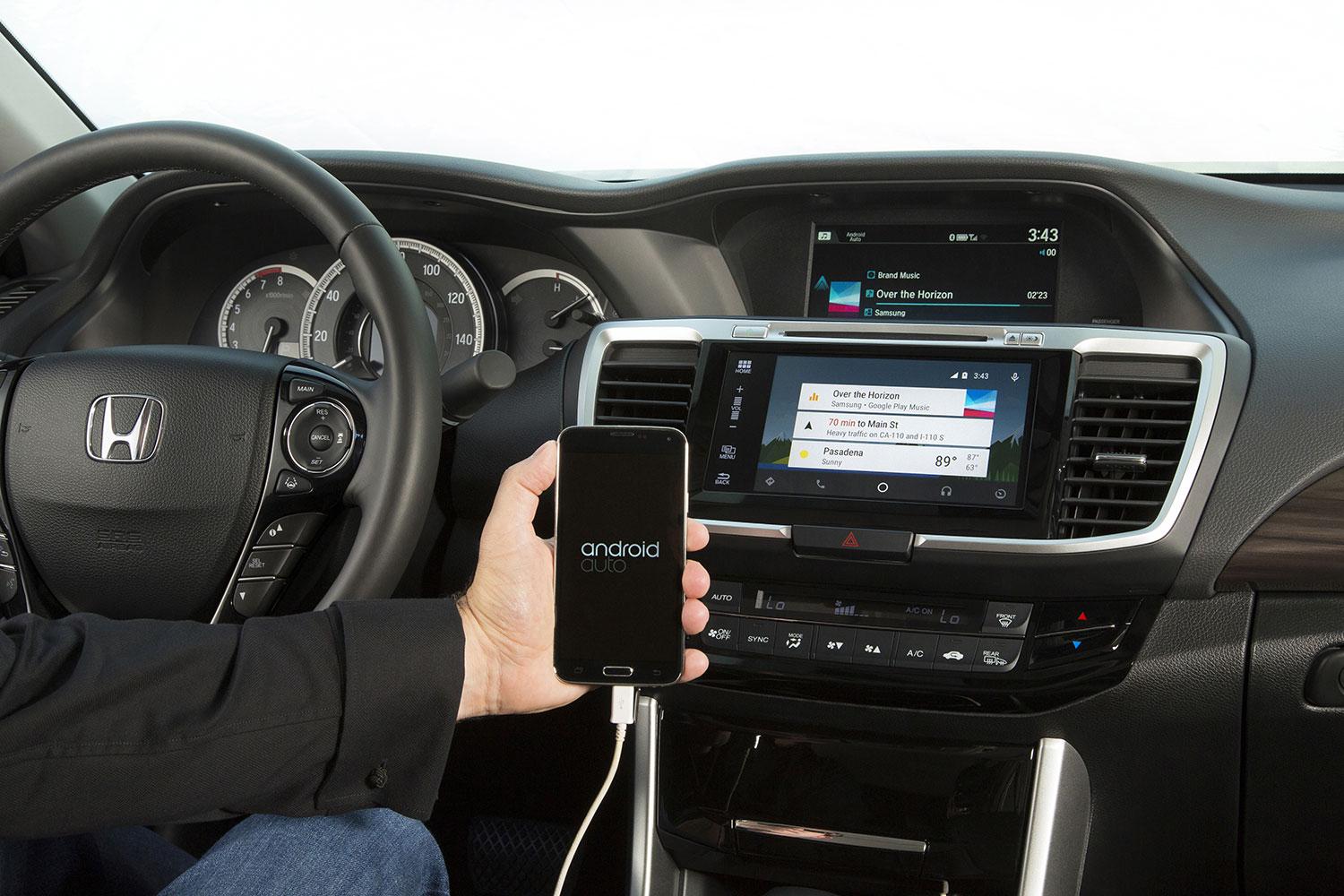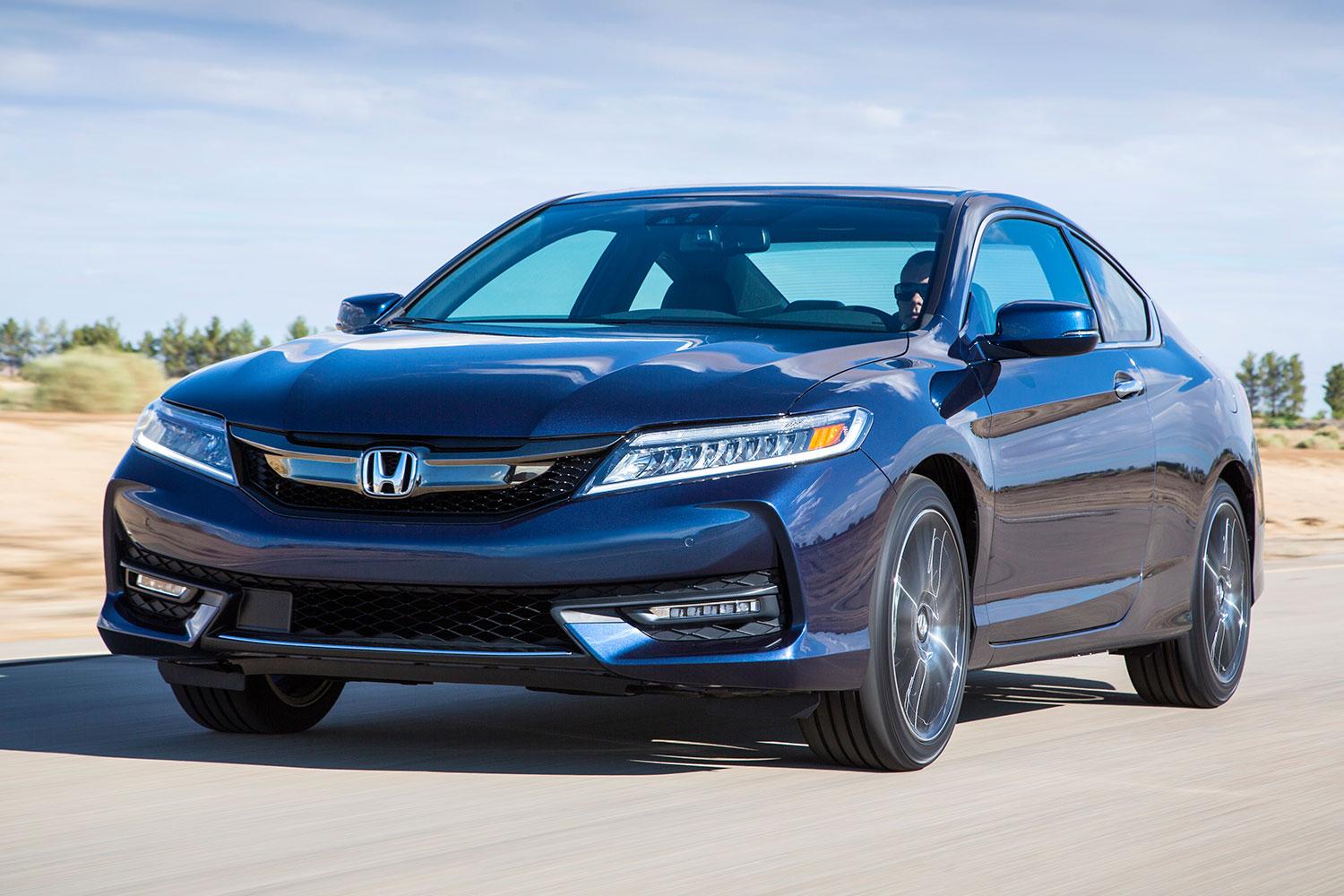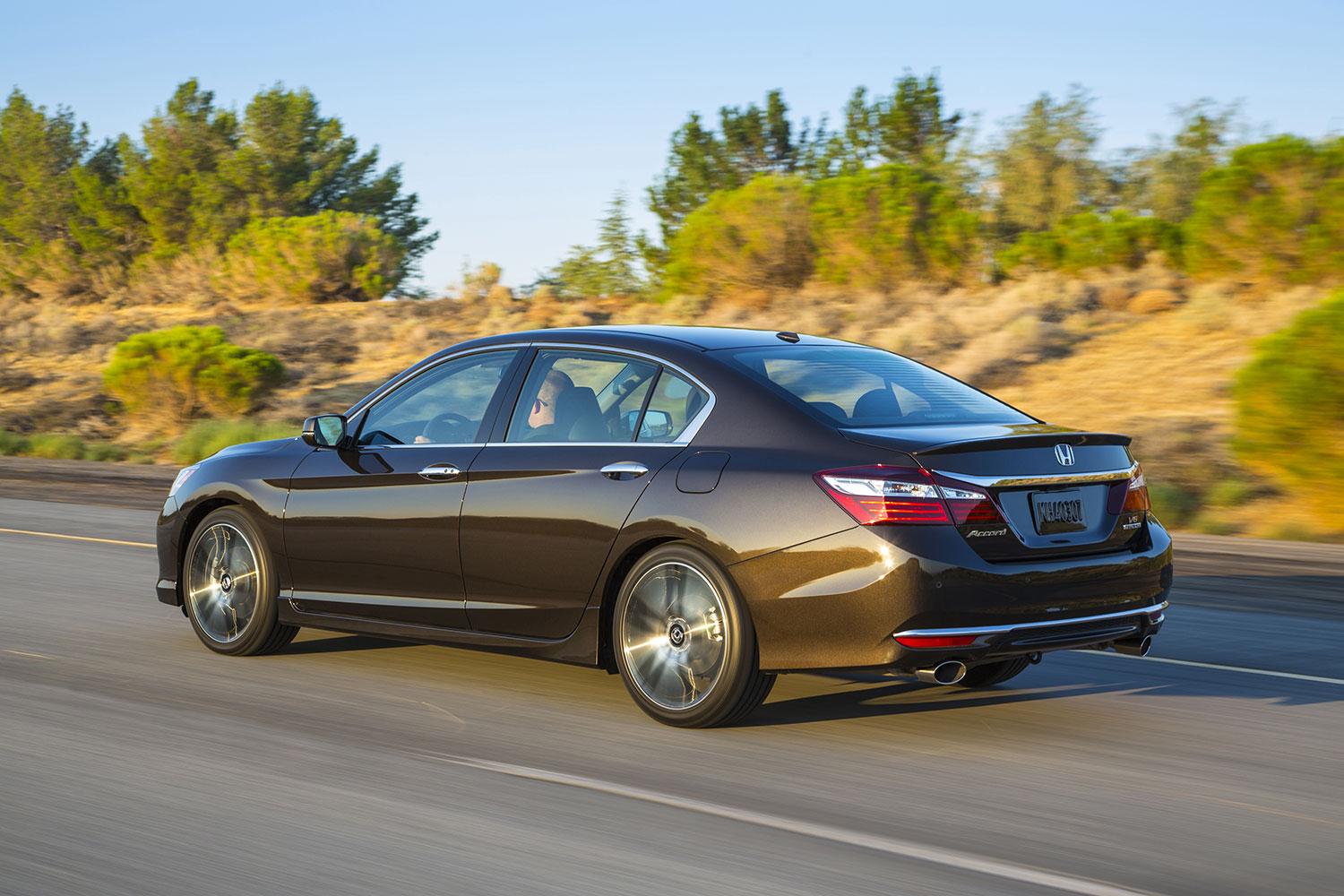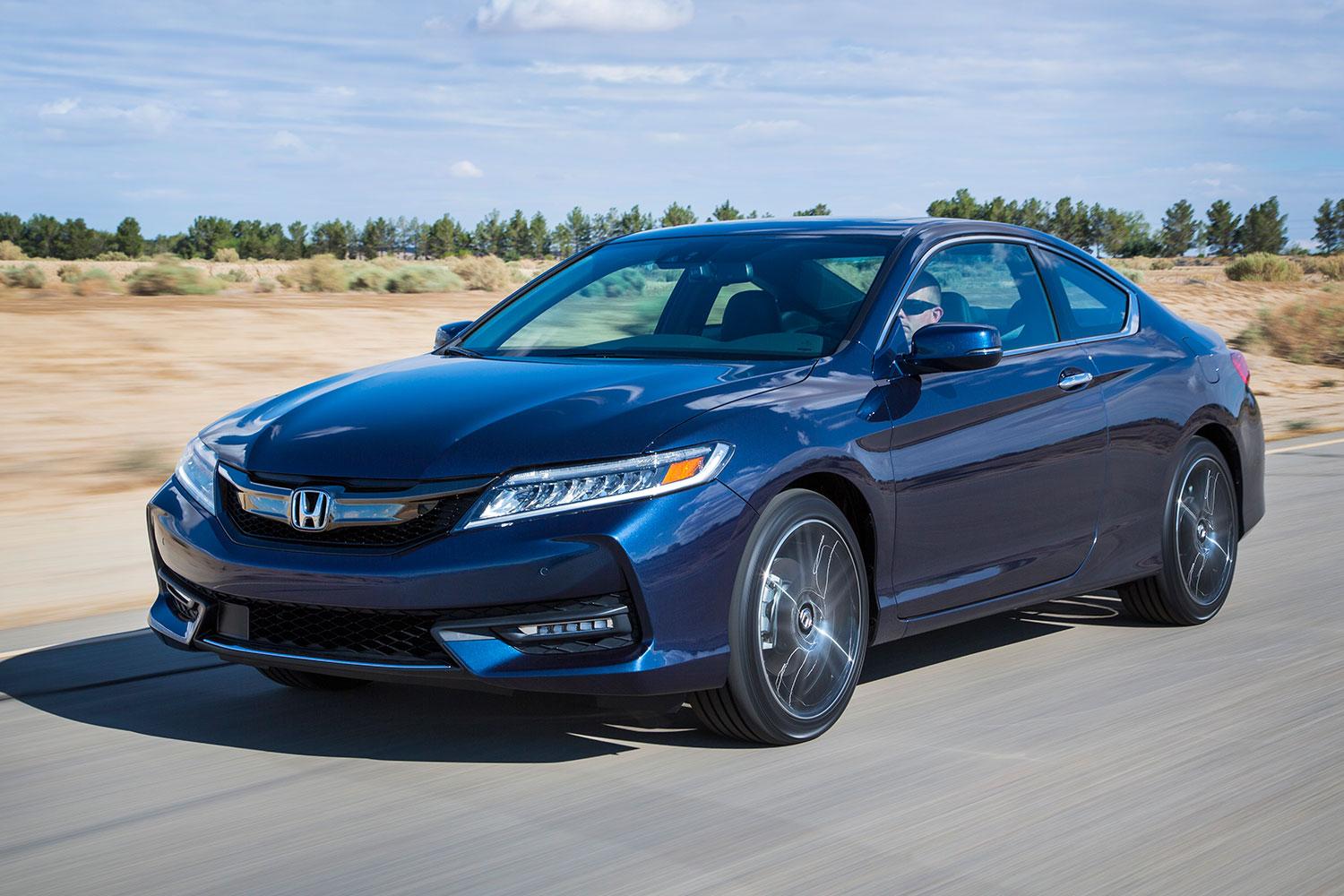The 2016 Accord maintains its dominant position as the best midsize sedan.
A sedan buyer wants two things above all: reliability and utility. So like a trusted take-out joint or favorite restaurant, midsize-vehicle makers are consistent. Reliability? You bet. Utility? Sure. But since today’s consumer can easily be swayed to purchase a crossover when previously a midsize sedan was the go-to, a modern sedan needs to validate its existence more than ever.
Some automakers choose to layer in “fun-to-drive” personality, class-leading technology, advanced safety systems, fuel-efficient engines, or luxurious ride quality to stand out from the pack. And like a good restaurant chain, you know what you’ll get, since each brand has staked its raison d’etre in the sedan world with a few signature traits.
The 2016 Honda Accord is what every automaker wants to build and every consumer needs to own: a good car.
The lay of the land (through the eyes, hands, and feet of yours truly) is as follows:
The Toyota Camry is the beige of the automotive color palette that comfortably, frugally, and reliably will commute you and your family wherever it is Camry buyers go… for eternity. The Mazda6 takes the road less traveled (as long as it has curves) by delivering excellent handling and top-class fuel economy in a sensuous package. The Ford Fusion is a style-forward, fuel-sipping midsize statement for those who are insulted by the Toyota Camry, but inevitably desire its nonexistent maintenance bill. The Nissan Altima is an athlete of a sedan, with good power and a compliant chassis (and a woeful CVT transmission). The Hyundai Sonata is a wildcard with intuitive interior technology, handsome looks, and a surprisingly peppy powertrain. The Subaru Legacy is another performance leader that seeks to reward good drivers in all weather conditions, while the Volkswagen Passat delivers ample storage space and a “lets not think outside the box” attitude. The Kia Optima is a Hyundai Sonata with a quirky design and LED taillights, and the Chevy Malibu is somewhat desperate to find its place in the sedan world.
I’ve just listed nine rivals for the 2016 Honda Accord, and yet the Accord may never notice it has competition. It’s been leading the sales charge for years now. Why? After spending some seat time in the 2016 Accord, I’ve concluded that Honda’s money-printing sedan, through the combination of body styles and trim levels, is the rover of its segment: competent in every category a midsize sedan consumer would value — but confined to its generalist designation.
What’s in a facelift?
Honda declares that it has tweaked the handling and steering feel for a more dynamic ride, quieted the cabin, made the chassis more rigid and the body more aerodynamic, improved the ride comfort, and further modernized the safety and convenience technology.
The 2016 model year Accord is easy to distinguish thanks to its revised front and rear fascia, with styling inspired by the 10th generation Civic concept. LED headlights, turn signals, and taillights, optional 19-inch wheels, and a more steeply descending hood freshen the new Accord’s appearance. There are also three new exterior colors for the sedan: Kona Coffee, Lunar Silver, and San Morino Red, and two new colors for the coupe: deep-opal metallic and lunar silver.

Inside, the cabin has been refreshed with a 7.0-inch touchscreen, rear 60:40 split folding seats, a cleaner dash, sport pedals, new trim colors, and better quality seats. On the Sport trim, a new shift knob, faux carbon-fiber trim panel, cloth/leather combination seats, and gloss black interior touches have been added. Honda’s first application of Apple CarPlay and Android Auto are now on offer in EX, EX-L, and Touring trims. I had a chance to play around with both systems and found them wonderfully intuitive.
Honda also has made its suite of Honda Sensing safety technologies available on all trim levels. The suite includes Collision Mitigation Braking, Road Departure Mitigation, Lane Keeping Assist, and Adaptive Cruise Control. I experienced each of these systems on the 2016 Honda Pilot and I was once again blown away by how intelligently each feature works with the Accord’s steering, braking, and throttle inputs. Honda’s safety technologies are truly ahead of the curve.
Unchanged are the 2016 Accord’s powertrain options, including a 2.4-liter four-cylinder making 185 horsepower and 181 pound-feet of torque or a 3.5-liter V6 developing 278 HP and 252 lb-ft of torque. The four-cylinder is paired with either a six-speed manual or a CVT. The V6 can be had with either a six-speed manual or six-speed automatic. Fuel economy has been marginally improved over the 2015 model year for the CVT at 27 city, 37 highway, and 31 combined miles per gallon. The 6-speed automatic achieves 21 city, 34 highway, and 26 combined mpg, and the 6-speed manual, when paired with the four-cylinder motor, averages 27 city, 34 highway, and 27 combined. In its most efficient guise, the 2016 Accord is among the most frugal sedans in its segment. If you’re looking for better mileage from the Accord, you’ll need to wait until next year when Honda re-introduces the redesigned Accord Hybrid.
The shape shifter
I call the Honda Accord a money-printing machine because, like Toyota’s Camry, each new generation or redesign has very little to prove. The Accord’s rich history of reliability and intelligent design makes it a no-brainer purchase. Meanwhile, almost every one of the Accord’s rivals is forced to break through the noise of literally dozens of midsize offerings based on attractive styling or trend-setting technology.
The 2016 Accord is a shape-shifting vehicle that consumers would be hard-pressed to fault.
The 2016 Accord, unlike the Camry, seems to effortlessly check every relevant box for midsize sedan/coupe shoppers. Pair the four-cylinder with a CVT transmission and it’s wonderfully fuel-efficient. Spring for an EX or above trim level and you’re rewarded with the latest infotainment technology — in this case the smartphone-mimicking Apple CarPlay and Android Auto systems. Get back to basics with a six-speed manual-equipped Accord Sport and there’s a fun yet tame driving experience to be had. Load up a Touring model and travel in blissful quiet and comfort. You get the idea – the 2016 Accord is a shape-shifting vehicle that consumers would be hard-pressed to fault.
But it’s my job to have at least a couple of gripes, so here goes.
Frugal though the four-cylinder with a CVT transmission is, the way it delivers power is frustrating. Unless you’re in sport mode, the powertrain never feels ready to deliver a punch for low-speed or at-speed maneuvers. In sport mode, there’s nothing to worry about, but buyers of this setup are concerned about fuel economy, and probably won’t want to leave sport mode active at all times. For the vast majority of driving scenarios, having to wait an extra second for access to power is a non-issue, but it did catch me off guard.

Braking in all 2016 Accord trims is excellent, but I have beef with the pedal feel of the non-Sport or Touring levels. When pushing hard on the brakes, the 2016 Accord has zero problem cutting speed, but I’m uncomfortable with how much pedal travel is between my foot and deceleration. Consistently, both the sedan and coupe come to complete stops in reasonable distances, but I wish there was more of a progression to the braking.
Predictably capable
It’s a miracle that Honda still offers both four-cylinder and six-cylinder Accord sedan and coupes with a six-speed manual, but thank heavens they do; it’s just so smooth. Effortlessly rowing through the gears, I think about how few new drivers learn how to drive a standard transmission (at least here in the U.S.). I could understand why this is true if the only vehicle options were hardcore sports cars, but when there are brand new vehicles like the 2016 Accord with easy-to-maneuver gearboxes, I’m puzzled why more consumers don’t consider them.
For parents, a manual transmission means it will be much more difficult for your teenager to text and drive, and for younger drivers, a good manual gearbox is just plain fun. I’ll step off my soapbox now with a simple “thank you” to Honda for not only offering a stick, but continuing to deliver one of the best gearboxes on the market.
“Thank you” to Honda for continuing to deliver one of the best gearboxes on the market.
As for the Accord’s driving dynamics, it’s clear that even as a coupe, even with the V6, and even with a manual transmission, this is no sports car. But if that piece of information doesn’t bother you, there’s a lot to love about how the 2016 Accord drives. In Sport and Touring trim, the steering responsive is sharp (though not accompanied by much feedback), cornering is flat and fluid, and both the four and six-cylinder engines have plenty of poke.
Inside the cabin, even in the lowest of trims, the 2016 Accord’s layout is smart, the materials feel high-quality, and visibility is excellent. The front seats are comfortable and supportive, the rear seats have plenty of legroom for adults, there’s ample interior storage, and button layout is intuitive. At cruising speeds, there’s very little road noise in the cabin and it feels like both commutes and long trips would be a breeze. The 7.0-inch display is responsive and easy to read, even in direct sunlight. To complement Honda’s brilliant safety technology, Honda expects to receive a five-star safety rating from the NHTSA and a Top Safety Pick Plus designation from the IIHS.
The 2016 Accord Sedan will start a $22,105 for the 2.4-liter four-cylinder LX trim with a six-speed manual (add $800 for the CVT transmission), the six-speed manual-equipped Sport will cost $24,165, the EX will start at $25,580, the EX-L that’s only paired with a CVT jumps up to $28,570, the 3.5-liter V6 EX-L with a six-speed automatic is priced at $30,645 and the fully decked-out V6 Touring sedan will retail for $34,580. As for the 2016 Accord Coupe, it will start at $23,775 for the manual-equipped, 2.4-liter four-cylinder LX-S (add $850 for the CVT), the EX will chime in at $25,900, the CVT-only EX-L costs $28,745, the V6-optioned EX-L will command $30,925, and finally, the V6 Touring with a 6-speed automatic will be priced at $34,125. The above prices exclude a destination charge of $825.
Despite the styling improvement and safety enhancements, the LX coupe and sedan pricing remains unchanged from the 2015 model year and the rest of the range only gets a slight bump. For 2016, the LX sedan adds a multi-angle rearview camera and LED taillights, the Sport gets the full appearance package (LED lighting and 19-inch wheels) plus 60/40 split folding rear seats, the EX gains LED taillights and fog lights, XM and HD radio, a 7.0-inch Display Audio system, Android Auto and Apple CarPlay, Homelink, and Remote Engine Start, and the Touring completes the hierarchy with the Sport’s body kit and lighting, auto rain sensing wipers, auto high beams, a rear spoiler, heated rear seats, and parking sensors.
All 2016 Accord sedan and coupe models can (and should) be equipped with Honda Sensing safety technologies for an additional $1,000.
Conclusion
If the crossover craze has yet to take hold of you, the only argument against the 2016 Honda Accord is that it’s acceptably good at everything, and therefore an everyman’s car. If you want to stand out from the crowd and a Marino Red, manual-equipped Accord isn’t distinguished enough for you, then you’re probably in the market for a Mazda6.
When the 2016 Honda Accord goes on sale on August 26th, it will appear on dealer lots a few hundred feet away from two handfuls of rivaling midsize sedans. And it will sit there, patiently waiting for you to test drive the competition, “just to see what’s out there.”
But once you’ve made your rounds, and found faults with everything else available, you’ll end up at Honda, writing a check for yet another Accord, because it’s what every automaker wants to build and every consumer needs to own: a good car.
Highs
- Handsome exterior updates
- Intuitive convenience features
- Top-notch safety technology
- Comfortable, quiet ride
- Peppy, yet frugal engines
Lows
- Lacks brake pedal feel
- CVT transmission needs a while to deliver power


